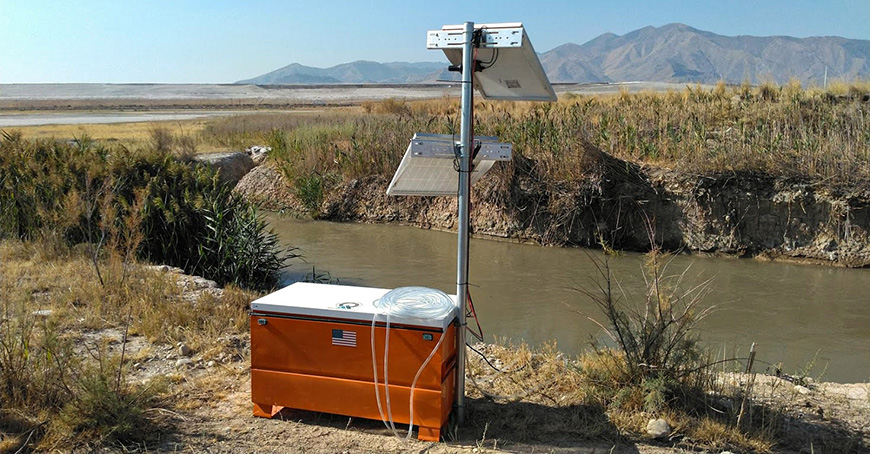
Oct. 5, 2020
By Jared Mendenhall

This fall, scientists from the Utah Department of Environmental Quality’s (DEQ) Division of Water Quality (DWQ) installed stormwater monitors in canals along the Northwest Quadrant of Salt Lake City. The canals move runoff from rain and snowmelt to the Great Salt Lake. The monitors will provide stormwater data around Utah’s inland port and create a baseline for any effects the port will have on water quality.
Water quality concerns around the Great Salt Lake include heavy metals such as mercury, selenium and trash. In high concentrations, these pollutants harm wildlife—especially birds.
The Great Salt Lake and its water quality are important for Utah’s economy, and the snowmelt from lake-effect snowfall accounts for 10% of Salt Lake City’s average annual precipitation.
To ensure the protection of the Great Salt Lake, DWQ developed a Sampling and Analysis Plan (SAP). The plan is focused on water quality parameters associated with stormwater runoff. Stormwater runoff comes from rain and snowmelt that flows over land or surfaces that do not allow water to pass through like paved streets, parking lots, and buildings. The runoff picks up pollutants such as trash, chemicals, oils, nutrients, heavy metals, pesticides, fertilizers, herbicides, and dirt.
DWQ’s plan defines the data quality objectives, sampling and analytical procedures, safety considerations, and documentation and reporting requirements. Monitoring the stormwater will help DWQ determine the effects of development in the area.
To learn more about water quality sampling at the Utah Inland Port, check out DWQ’s Sampling and Analysis Plan.
I am a public information officer for Utah DEQ and a former marketer and magazine editor. Follow me on Instagram @Jarv801.
